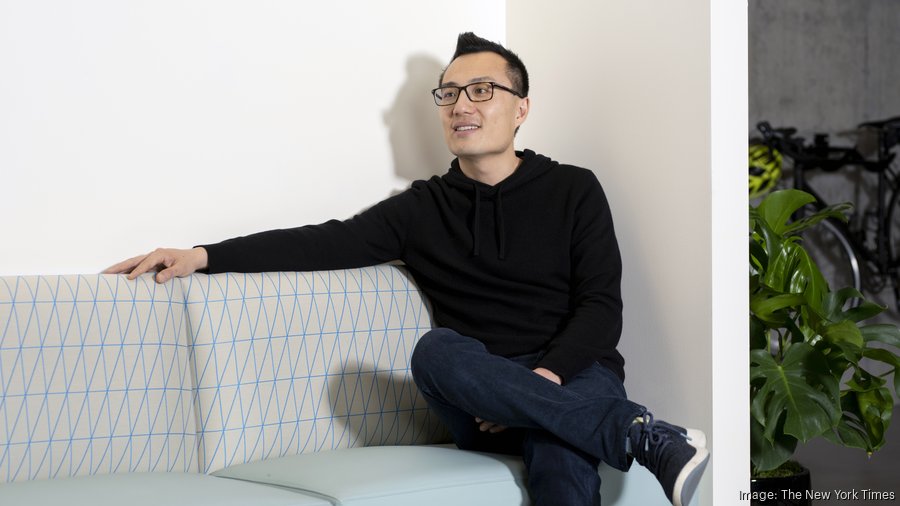From Hummus Deliveries to a $30B Company: How DoorDash CEO Tony Xu Built a Logistics Empire by Obsessing Over Customers

"There's no better way to be the expert than just to do the work."
— Tony Xu, CEO of DoorDash
In a revealing interview on "How to Build the Future" by Y Combinator, DoorDash co-founder and CEO Tony Xu broke down the gritty, customer-obsessed journey behind building one of the most dominant logistics companies in the world.
The Unsexy Start That Changed Everything
In 2013, while classmates planned their summer vacations after Stanford, Tony Xu was loading hummus into the trunk of his Honda Civic. There was no sophisticated backend, no funding cushion, and definitely no guarantee of success. Just four co-founders, eight static restaurant menus, and a Google Voice number that rang all their phones at once.
It was called PaloAltoDelivery.com. The MVP was built in under an hour.
Twelve years later, DoorDash commands more than 65% of the U.S. food delivery market.
So how did Tony Xu and his team turn a scrappy side project into a generational logistics business? The answer lies in one principle: obsess over the customer, not the competitor.
Finding the Idea by Living the Problem
DoorDash wasn’t born in a brainstorming session. It emerged from listening — and more importantly, doing. Xu and his team would follow local small business owners around for a day: packing boxes, making salads, doing accounting. One such visit to a macaron shop became pivotal.
“She showed us a thick booklet of turned-down delivery orders. It made no sense to us… that became the thread we pulled on,” Xu recalled.
That thick stack of unfilled orders sparked a question: What if every small business had access to local delivery — without needing its own fleet?
The YC Bet: Proving Three Things in 10 Weeks
At Y Combinator, the DoorDash team set out to answer three unknowns:
- Will customers pay for this?
- Will merchants pay for this?
- Will drivers deliver for this?
To test it, they did every delivery themselves. It wasn't just hustle — it was user research.
They learned early that young families, especially moms, were the most frequent and vocal customers. No discounts, no marketing — just repeat usage. That was enough validation on the consumer side.
But the insight that really unlocked DoorDash’s potential came from a small hiring experiment: when given the chance to earn more by switching platforms, drivers often stayed with DoorDash. Why? The work fit their lifestyle better. Younger, more female, more flexible.
“They self-selected completely differently... We weren’t sure how big the dasher pool would be, but it gave us enough confidence,” Xu said.
When the Site Crashed and the Cookies Came Out
DoorDash nearly died during a Stanford football game in fall 2013. Demand exploded. Orders ran over an hour late. And the team still couldn’t raise capital.
The co-founders stayed up baking apology cookies, which they hand-delivered the next morning.
They also refunded every order — a move that cost them 40% of their remaining cash.
“That night became the story that translated to our internal value: customer obsessed, not competitor focused,” Xu said.
That decision — emotionally right but financially terrifying — built the culture that kept DoorDash alive through tougher times ahead.
The Contrarian Suburb Strategy That Beat Uber Eats and Grubhub
While competitors fought over New York and San Francisco, DoorDash quietly expanded into the suburbs — where restaurants were more spread out, parking was easier, and families placed larger orders.
“If you live in Manhattan, you can walk to hundreds of restaurants. But in the suburbs, you'd walk miles before seeing one,” Xu explained.
The math proved them right: higher order values, lower friction, and greater repeat usage.
Raising Capital Was Harder Than Building the Product
Despite impressive traction, Xu was rejected by hundreds of investors. Even their Series C was a down round. For three consecutive years (2016–2018), the internal numbers looked great — but the external validation didn’t come.
“It’s not just your score — it’s a relative game. And investors weren’t sure we’d win,” Xu reflected.
That changed with their Series D in 2018, when DoorDash finally secured meaningful capital. With it, they rapidly expanded and became the category leader.
COVID-19: A Crisis That Cemented the Mission
In 2020, as delivery demand spiked and chaos reigned, DoorDash didn’t optimize for revenue — they optimized for impact.
- Cut commissions in half, costing over $100M
- Ran TV ads promoting competitors to help restaurants survive
- Delivered PPE and meals to hospitals and frontline workers
“The average restaurant has 17 days of cash on hand. Every hour mattered,” Xu said.
That year reaffirmed the company’s core purpose: to grow and empower every physical business and increase the GDP of every city.
Tony Xu’s Advice to Future Founders
Tony Xu’s journey offers one defining piece of advice:
“The best way to become an expert is to just do the work. You might be surprised how quickly you become the expert.”
He didn’t come from logistics. He learned by delivering food himself for three years.
Today, DoorDash is not just a food delivery app — it's a logistics infrastructure for the physical economy.
Wantrepreneur Takeaways
- Scratch beneath the surface — real insights often come from doing the unglamorous work.
- Validate through doing, not just surveying.
- Customer obsession beats competitor fixation — always.
- The suburbs are often overlooked — and profitable.
- Conviction matters more than capital, especially early on.
- Mission > Metrics when it comes to lasting impact.





